#the middle one was part of an exhibition at jut art museum
Explore tagged Tumblr posts
Text
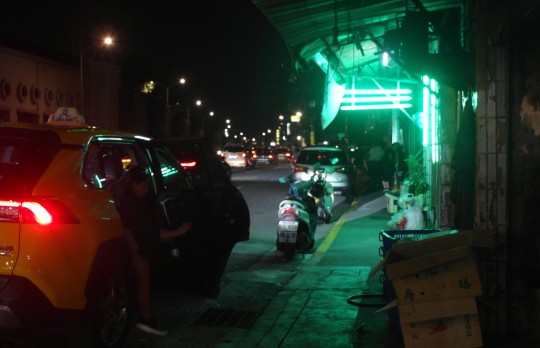
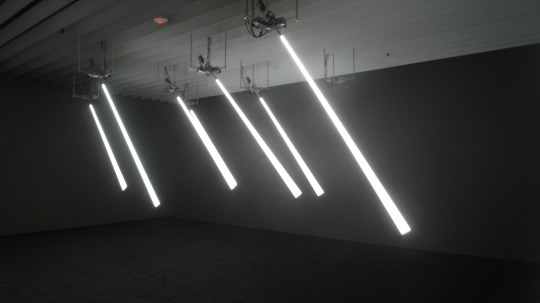

lights in the darkness
14 notes
·
View notes
Text
10 days in Scotland
I just returned from a 10-day trip to Scotland, in which my friends and I rented a car and drove up through the Highlands, to the Isle of Skye, and back down again. It was an optimistic itinerary for the amount of time we had, and with hindsight, we should have made it into a 2-week trip instead! It was still a scenic drive though, and there was a lot of natural landscapes and beauty to be appreciated.
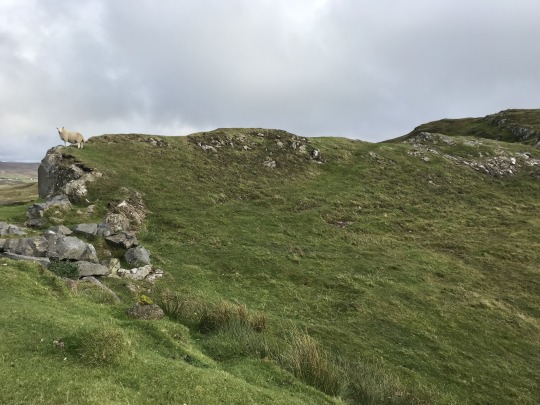
The first two days I spent solo in Glasgow, which is a pretty city with not much to see tourist-wise, which isn’t so bad if you think about it, because it means there are less tourists and you can enjoy the city at a slower (more normal) pace. The first day I spent in the West End, which has some wonderful secondhand book shops (head to Thistle!) and cozy cafes to read what you found at the book shops. I also went to the Kelvingrove Musem, a sprawling building with tons of exhibitions from every topic--art, history, folklore and ethnographic, etc. And the best part--free entry!

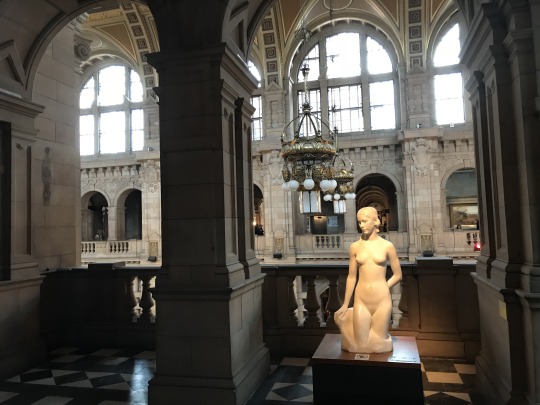
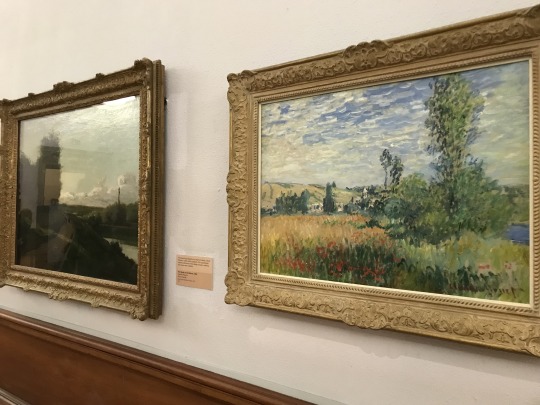
The second day I of course went to the city center, stopping first at the cathedral (also free entry!) and then walking through the graveyard (called the Necropolis) located right behind the cathedral on top of a hill, so it offers splendid views of the cathedral and the city surrounding it. One of the favorite things about Scotland is how green it is, which was a recurring theme on this trip. Next stop was The Lighthouse, a tower built by one of Scotland’s most famous modern artists, Charles Rennie Macintosh, and offers a bird’s eye view above the other buildings in the city center. I also stopped at the main square, St. George’s, and at the Museum of Modern Art. Again, there were tons of cute cafes to stop and sit for a while, and I wish I could have gone to more of them!
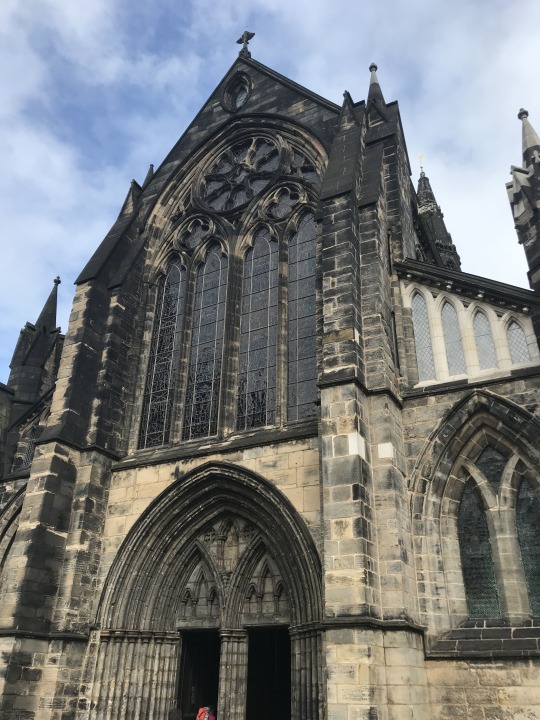

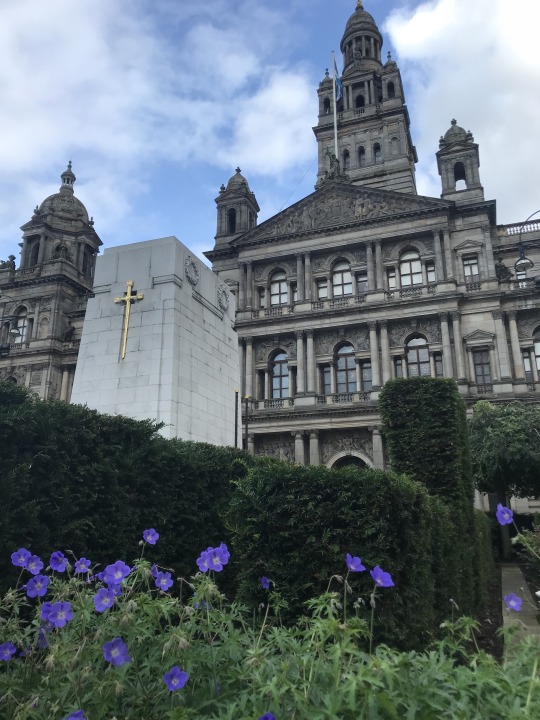
Once my friends arrived, we went to the Isle of Bute for a day trip, which was a one hour train ride, and then half hour ferry ride, away from Glasgow. It was remarkably easy to get to, and we walked around the center for a bit, seeing the castle and enjoying the harbor view before taking a bus tour around the island. The driver was very informative and we were able to see the whole island in an hour and a half, and learned a lot about it as well.

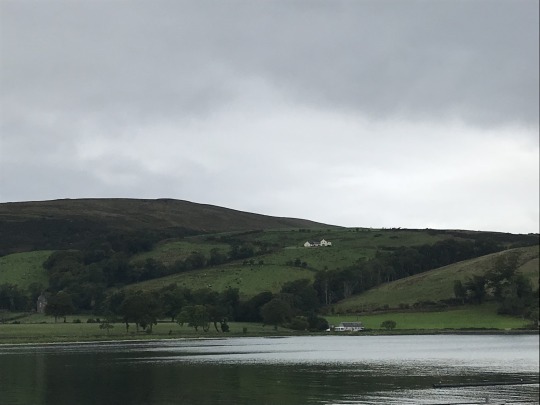

The fourth day we picked up the car and headed to Stirling, a short-is drive from Glasgow. Stirling is small but pretty, featuring a castle up on a hill (so more great views!), a very small art and history museum, a castle on the outskirts of town that was featured in Outlander, and a tower also on the outskirts of town dedicated to William Wallace, a defender of Scottish independence. This was one of my favorite things we did, because as you climbed the tower steps, each level had information about the monument itself and also about the historical context--very interesting. Plus, you were rewarded with an amazing view once you reached the top!

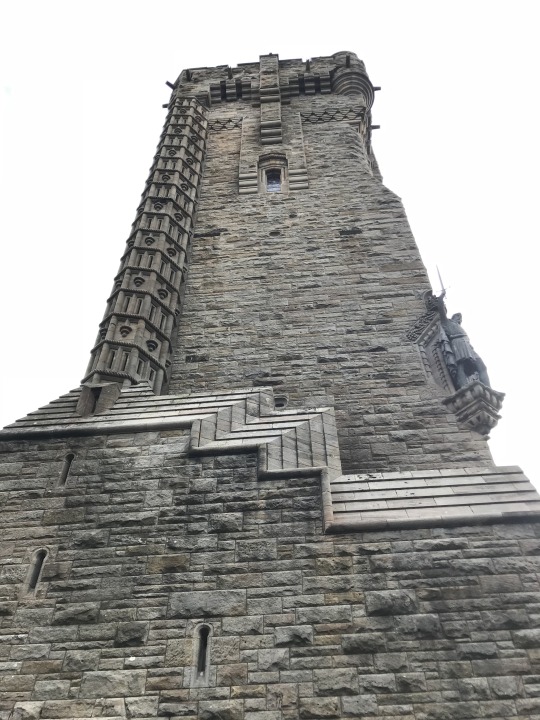
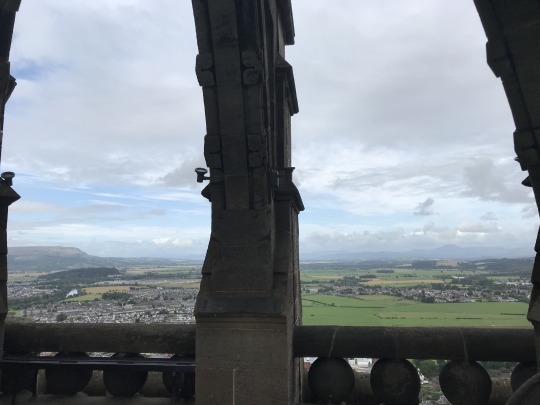

We then continued on to St. Andrews for part of the next day, where we had lunch and went to the cathedral ruins and castle ruins. William Wallace is buried in the cemetery next to the ruins of the cathedral. St. Andrews is even smaller than Stirling, but boasts one of the oldest universities in the UK, and is quite charming. That afternoon we had a long (5 hours!) drive to Inverness, which is in the north of Scotland amid the Highlands.
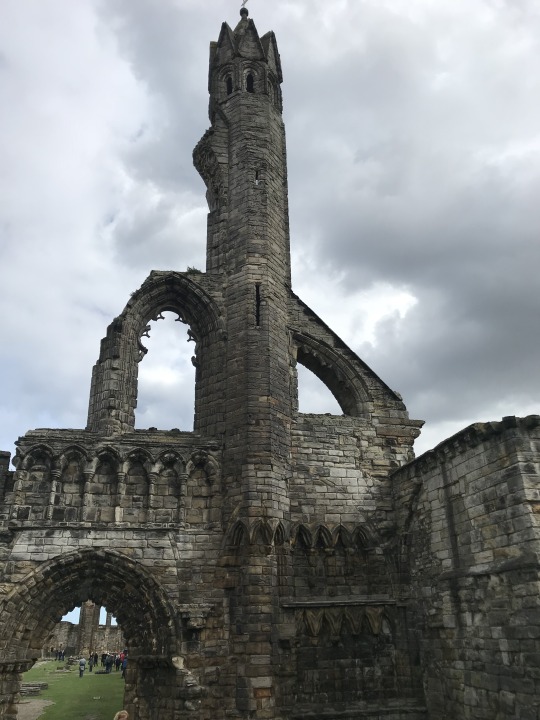
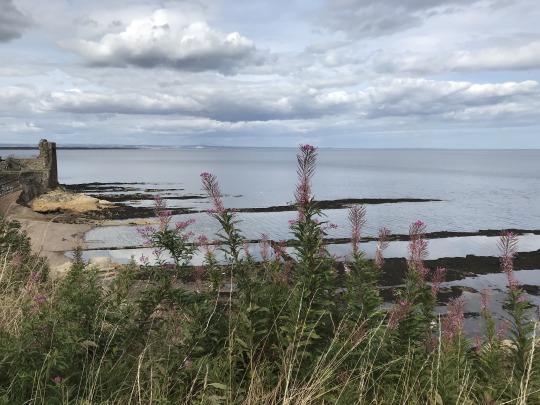
Inverness was my favorite place we went, there is just something about it that I really liked--I can’t say anymore. The downtown area is quite pretty, with a castle nestled in the middle overlooking the river. The cathedral sits on the other side of the river, easily seen from the castle lookout point. Right next to the castle is an art and history museum, which I really enjoyed. I would love to return to Inverness one day and stay for a longer period of time to really get a feel for this lovely city.

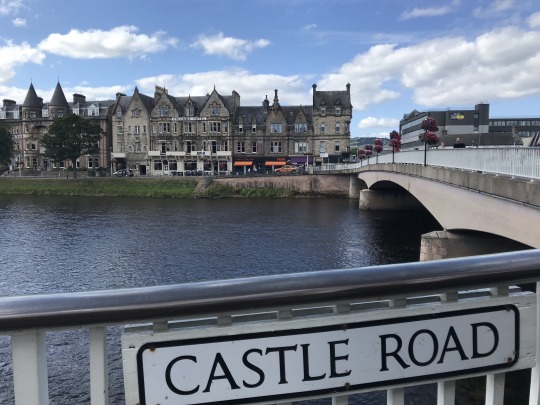
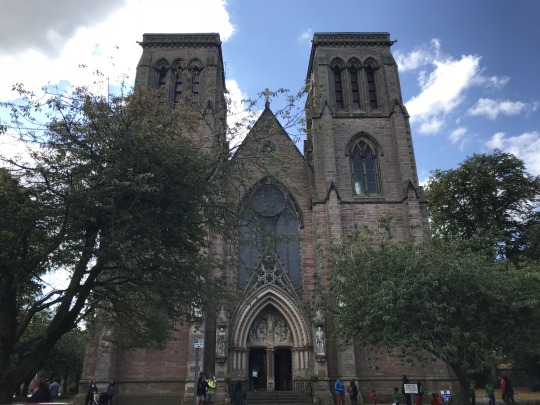
Next up was the Isle of Skye, famed for it’s natural beauty and wonderful landscapes. It did not disappoint, although we could have spent much more than one day here--a week could have easily been spent, especially for those of you who enjoy hiking (I don’t! Ha). Some of the most beautiful parts of the Isle of Skye included the castle of Dunvegan and Neist point, which is basically a trek first down one mountain and then up another, which juts out over the ocean. Below you can see the lighthouse, which we did NOT have the energy to walk to after our climb, haha.
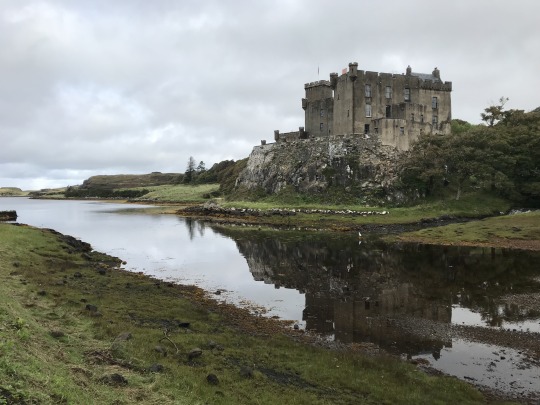
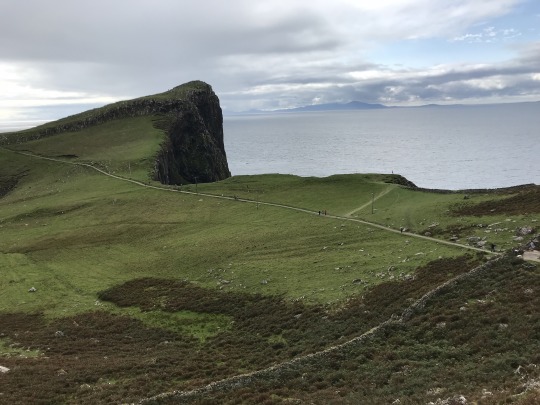

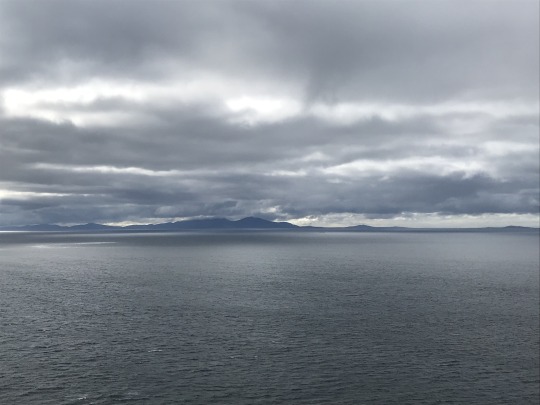
We also took advantage of the car to make stops as we pleased, including at Loch Ness (sorry, no monster sighting at all...) and at Dornie Castle, very picturesque as you can see from the pictures...
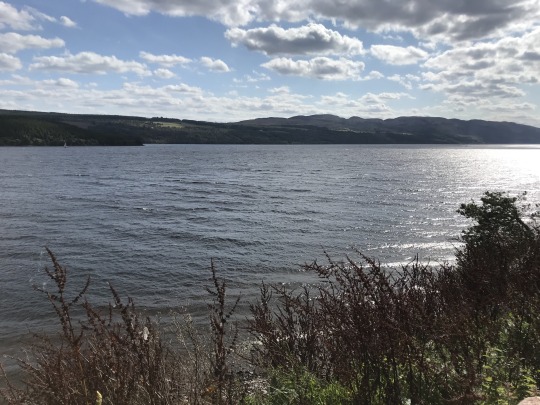
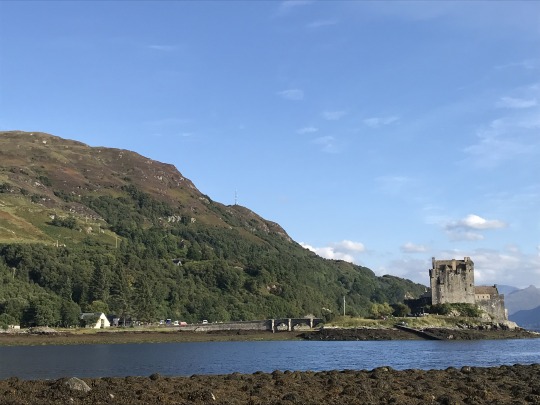
Like I mentioned earlier, to be able to more fully appreciate all of these places, I think a few more days should be added to this itinerary, especially if you also want to visit Scotland’s most touristy city, Edinburgh (which I had already been to and is why we did not go again). Scotland is a wonderful country, with friendly people who will talk your ear off if you let them! Renting a car is the best idea, and don’t worry, driving on the left side isn’t as hard as one thinks, as long as you follow the car in front of you like I did! ;)
#scotland#glasgow#inverness#standrews#stirling#williamwallace#isleofskye#isleofbute#lochness#lochlomond#thehighlands
11 notes
·
View notes
Text
The Met Names Max Hollein as Next Director—and the 9 Other Biggest News Stories This Week
01 The Met has appointed Max Hollein, previously of the Fine Arts Museums of San Francisco, as its new director.
(via the New York Times)
Hollein, 48, will oversee “the artistic side of the museum — exhibitions, acquisitions, programming,” according to the New York Times, when he formally assumes the directorship this summer. Daniel H. Weiss, the Metropolitan Museum of Art’s president and CEO, will remain in charge of its business and operations. It is the first time in 60 years the venerable New York institution has not appointed someone from within its own ranks, the Times reported. Before moving to San Francisco in 2016, Hollein directed several institutions in Frankfurt over the course of 15 years, including the Städel Museum, which is known for its Old Masters collection. He was responsible for developing what the Times called “a forceful digital strategy” at the Städel, and raised significant private funds for renovation and expansion, an unusual accomplishment in Europe, where museums receive much more government support. He brought his innovative vision to San Francisco, too, creating digital experiences for the Fine Arts Museums, including a Minecraft map of the pyramids of Teotihuacan, for a show on the Mexican archaeological site.
02 Chris Dercon resigned from Berlin’s Volksbühne, ending his controversial tenure as director.
(via DW)
Dercon and Berlin’s culture senator Klaus Lederer agreed the embattled director should depart from the city’s cherished progressive performance space, according to a statement from public Berlin broadcaster RBB, which first reported the story on Friday. Criticism of Dercon, which began as soon as his appointment was announced in 2015, marred the former Tate Modern director’s tenure at the Volksbühne. Opponents charged he was planning to take the beloved space in a more corporate direction and his debut program last month was met with a middling reception in the city. The debate often veered into personal attacks on Dercon, whose door was smeared with feces on a near-daily basis in August 2017, even before his official September start date. Weeks after Dercon did take the reigns, protesters occupied the performance space for six days, with nearly 40,000 signing a petition in opposition to Dercon’s tenure. In announcing Dercon’s departure, Lederer called the personal attacks “unacceptable,” reported DW, adding they were “unworthy and devoid of any culture.” Klaus Dörr, the Volksbühne’s managing director, will temporarily take charge of the institution until a permanent successor is found.
03 A Marc Chagall painting was recovered nearly 30 years after it was stolen from an Upper East Side home.
(via the FBI)
The painting was recovered last year from a man in Maryland who had contacted the FBI’s Washington office after a suspicious local gallery owner, who declined to buy the Chagall due to its lack of documentation, suggested he reach out to law enforcement. The FBI’s art crime team determined it was a painting stolen from the elderly couple Ernest and Rose Heller, now deceased, by someone who worked in their apartment building and stole from tenants when they were away. The Maryland man who contacted the authorities had originally met with the thief to help sell the painting, but the deal fell apart and the Maryland man retained the painting and kept it in a homemade wooden box in his attic, labeled “Misc. High School artwork.” The Heller estate plans to auction the work, with proceeds from the sale going to reimburse the insurance company that had paid the theft claim, and to several nonprofit organizations, including an artists’ colony in New Hampshire.
04 The Lucas Museum bought Norman Rockwell’s Shuffleton’s Barbershop from the troubled Berkshire Museum.
(via the New York Times)
The cash-strapped museum in western Massachusetts sparked controversy when it proposed deaccessioning some of its most prized paintings, including several by iconic American painter Norman Rockwell. At first, the sale of roughly 40 works was halted by two lawsuits, though a judge recently ruled the sale could proceed under certain conditions. The sale of Shuffleton’s Barbershop (1950) to an anonymous institution was announced in February, under an agreement that involved the Berkshire Museum and the state attorney general’s office. That deal, meant to prevent the Rockwell work from disappearing into a private collection at auction, required the purchasing institution to loan the painting to the Norman Rockwell Museum for 18 to 24 months, before returning to its original home, which has now been revealed to be the Lucas Museum of Narrative Art in Los Angeles. The Times reported that “the museum’s founder, George Lucas, of ‘Star Wars’ fame, is already known as the leading private collector of Rockwell’s work,” and owns “dozens” of Rockwells, most of which will eventually go to his museum.
05 Art collector Victor Pinchuk has been ensnared in the U.S. Special Counsel’s Russia investigation by a $150,000 payment to the Trump Foundation.
(via the New York Times)
Three sources told the New York Times that special counsel Robert S. Mueller III is investigating a $150,000 donation that Pinchuk, a Ukrainian steel magnate, gave to the Donald J. Trump Foundation in September 2015. The probe comes amid a broader investigation into foreign money going to then-candidate Trump in the years leading up to the 2016 presidential election. The payment was solicited by Michael D. Cohen, the president’s personal attorney, and was given in exchange for a 20-minute appearance, via video, that Trump made at a conference in Kiev. The Mueller investigation has primarily focused on connections between the campaign and Russia, but the money from Ukraine is significant because, as a former IRS officer Marcus S. Owens told the Times, “it comes during a campaign and is from a foreigner and looks like an effort to buy influence.” He also argued that $150,000 was “an unusual amount of money for such a short speech.” The Victor Pinchuk Foundation said in a statement that it reached out to Trump to foster “enduring ties between Ukraine and the West” and that, in 2016, “it was by no means assured that Mr. Trump would be the Republican nominee.” Pinchuk is also one of Ukraine’s biggest art collectors, known for displaying large-scale work by Jeff Koons and Damien Hirst in his garden. In 2006, his foundation opened the Pinchuk Art Centre in Kiev, and in 2009 launched the Future Generation Art Prize, which is awarded biannually to artists under 35. (The total winnings are $100,000.)
06 The touch of an overly-curious visitor shattered a Jeff Koons “Gazing Ball” on display in Amsterdam.
(via Hyperallergic)
A sharp sound echoed through the Nieuwe Kerk church in Amsterdam on Sunday, the last day of a Jeff Koons exhibition at the 15th-century site, after a visitor placed a fingertip on a hand-blown glass ball by the artist, immediately breaking the orb. The small blue sphere was part of Koons’s Gazing Ball (Perugino Madonna and Child with Four Saints) (2014–15), which featured a gazing ball placed on an an aluminum shelf jutting out from a copy of the altarpiece painting by Pietro Perugino. While the artwork invites visitors to come close in order to gaze, the only indicator that a safe distance should be respected was a piece of tape on the ground. Koons previously stated that a visitor would have to “lift the ball up for it to go anywhere,” ARTnews reported in 2015, due to what the publication described as a “metal rod coming up through the center of each ball.” But the shattered silver insides of the orb strewn across the floor of the Amsterdam church prove at least some are easier to dislodge. While the value of the artwork has yet to be released, Hyperallergic reported that the church is currently working with Koons’s studio to “assess the damage, as well as the possibility of repair.”
07 France and Saudi Arabia have agreed to a $20 billion tourism plan to develop the famed cultural site Mada’in Saleh.
(via The Art Newspaper)
Under the arrangement, reported by The Art Newspaper, France would help Saudi Arabia develop a museum, research center, university, and hotels, along with other cultural amenities and infrastructure in the Al-Ula region, which includes the ancient architectural site of Mada’in Saleh. Saudi Arabia’s government is footing the project’s bill, according to one source who spoke with the publication. That same source billed the planned museum on Arab history as being “two to three times bigger than the Louvre Abu Dhabi,” the success of which reportedly prompted Crown Prince Mohammad bin Salman to raise the idea of a cultural partnership with French president Emmanuel Macron. The pair signed off on the 10-year agreement this week. Mada’in Saleh is the home of a dazzling but difficult-to-access array of architectural wonders carved directly into the cliff face by the Nabataeans, whose kingdom spanned the fourth century BC to the first century AD.
08 An art collector who was part of Andy Warhol’s scene died when a fire broke out in his Trump Tower apartment last weekend.
(via the New York Times)
A blaze on the 50th floor of the apartment building in midtown Manhattan on Saturday injured four firefighters and claimed the life of 67-year-old Todd Brassner, a collector of art, watches, cars, and vintage guitars. Brassner, who in recent years struggled with health problems and bankruptcy, began collecting and dealing art after being introduced to Warhol by his father, the dealer Jules Brassner. Fellow collector Stuart Pivar, speaking with the New York Times, recalled that Warhol and Brassner were “very close,” and often went shopping together. “They were like two 14-year-olds, seeing the world,” Pivar said of the pair. “[Brassner] was very knowledgeable about pop art.” Brassner spent decades acquiring work by artists such as Robert Indiana and Mati Klarwein, which he stored in his apartment alongside curios such as a collection of ukuleles, but in recent years he became something of a recluse; Warhol biographer Blake Gopnik said he made several attempts to schedule an interview with Brassner, to no avail. Friends recalled that, after Brassner declared bankruptcy in 2015, he attempted to sell his Trump Tower apartment but could not find a buyer after the 2016 presidential election. As one friend recalled, “When people heard it was a Trump building, he couldn’t give it away.”
09 The U.S. Holocaust Museum is aiming to raise $1 billion in five years after surpassing its previous funding goal.
(via the Washington Post)
The Holocaust Museum in Washington, D.C., celebrated its 25th anniversary on Monday with the announcement of a new goal: raising $1 billion by 2023. The museum set the ambitious figure after raising $715 million—$175 million above its target—from 366,000 donors for a campaign was supposed to end this year but will now continue. “We see that we have all this momentum that we really want to seize,” museum director Sara J. Bloomfield told the Washington Post. Raising $1 billion would be a coup for an institution with the relatively small operating budget of just $116 million. The Holocaust Museum has welcomed 43 million visitors, 15 million of which were students, since opening in 1993. The fruits of this final fundraising effort will go to expanding the museum’s educational impact and supporting its mission of inspiring people to “confront hatred, prevent genocide, and promote human dignity” at a global scale. The vice chairman of the museum’s board, Allan Holt, who is the son of two Holocaust survivors, told the Post that the museum is not only a tool for remembrance: “It is education, prevention of genocide. There’s no shortage of work to be done to continue to carry the message,” he said.
10 Toronto police are looking for a museum visitor who allegedly stole a pricey stone from a Yoko Ono exhibition.
(via the Toronto Star)
“Yoko Ono: The Riverbed,” currently on view at the Gardiner Museum in Toronto, invites visitors to hold, meditate, and stack stones, some of which the artist has inscribed with phrases like “dream,” “wish,” and “remember.” But one visitor took the interactive exhibition too far when she walked out of the museum with a stone reading “Love Yourself” on March 12th. While the phrase itself is extremely common––gracing the advertisements of countless body wash campaigns and titling a hit song by Justin Bieber––this stone is not. The object, which Ono hand-painted, is estimated to be worth $17,500. The Toronto police are now searching for the alleged thief, according to the Toronto Star, which first reported the stone’s disappearance. The police have released security footage of the suspect and are seeking help in identifying the 55- to 60-year-old woman who was caught on camera in a black ensemble with a red scarf.
from Artsy News
0 notes
Text
Things to Do in Long Beach, California
New Post has been published on https://www.usatelegraph.com/2018/things-long-beach-california/
Things to Do in Long Beach, California
01of 37
Things to Do in Long Beach
•••
Long Beach, California is a city of about half a million people in Los Angeles County, directly south of Downtown LA. It’s 24 miles from LA City Hall to Long Beach City Hall. That makes it closer to Downtown LA than some parts of the City of Los Angeles, and the two cities share a border where Long Beach meets the LA port neighborhoods of San Pedro and Wilmington.
Long Beach is best known for its urban waterfront attractions, like the Queen Maryand the Aquarium of the Pacific, but also has noteworthy cultural establishments and charming neighborhoods in other parts of the city. Despite being the 6th largest city in California, the LBC, as it has become known, has a small-town, provincial feel, with bike-friendly streets, active neighborhood associations and artist collectives that make it feel like everyone knows each other.
Beyond the waterfront and country club mansions and historic craftsman homes, the city is occasionally mentioned in the local news for its struggles with crime…MORE
02of 37
The Queen Mary
•••
The RMS Queen Mary is a classic Art Deco ocean liner which served as a military ship in WWII. It has been turned into a hotel and tourist attraction which offers a variety of tours as well as restaurants and nightlife. The Russian foxtrot submarine Scorpion is also docked with the Queen Mary.
More Museum Ships and Maritime Museums Around LA.
03of 37
Aquarium of the Pacific
•••
The Aquarium of the Pacific at Rainbow Harbor in Downtown Long Beach has over 12,000 pacific coast creatures from penguins, puffins and sea lions to a shark petting tank and a popular lorikeet forest where you can feed the colorful birds.
04of 37
Go to the Beach
•••
Long Beach Beaches offer a variety of activities from biking, skating or walking along the paved beach path to taking kiteboarding lessons. The entire four miles of ocean-facing beaches in Long Beach are sheltered by a breakwater, so there are no surfing waves, which makes them popular for families with kids and people who can’t swim. There are additional beaches facing inland waterways.
Bluff Park is the strip of grass and sidewalk path along the top of the bluff from Cherry Avenue in the west to Redondo in the East. The bluff is a favorite spot for romantic sunset walks for people who would rather not go down to the sand. Despite the traffic roaring by on Ocean Blvd, people often picnic on the bluff.
05of 37
Shoreline Village Shopping and Dining
•••
Shoreline Village is a boardwalk area with funky shops, souvenirs, restaurants and bars along Shoreline Marina. There is a carousel, an arcade and bike, pedal cart and skate rentals you can take out on the beach path. You can also rent power boats, Jet Skis, electric boats, kayaks and sailboats from the marina. Shoreline Village hosts live music on summer weekends and during the Christmas season.
06of 37
Wheel Fun Rentals and Segway Tours
•••
Wheel Fun Rentals rent pedal surreys, pedal karts, bikes, tandems, tag-a-longs and strollers at Shoreline Village and Stand-Up Paddleboards at Rainbow Harbor Dock 10. They also offer Segway tours around the Shoreline Marina and Rainbow Harbor area, or an extended tour all the way over to the Queen Mary.
You can also take a Segway Tour from Nation Tours a few blocks away in the East Village Arts District. They also offer a tour that includes a ride around Naples Island in Long Beach.
07of 37
Whale Watching, Harbor Tours and Dinner Cruises
•••
You can catch a variety of boat tours from Long Beach including Harbor Cruises, Whale Watching, Dolphin, Marine Life and Ecotourism Cruises, which are offered by several companies all departing from Rainbow Harbor.
Check prices on Long Beach boat tours.
08of 37
Walk Around Naples Island
•••
Naples Island is actually three islands in Alamitos Bay in Long Beach. There is a big island wrapped around a smaller inner island with another tiny bit of island off to the side known as Treasure Island. When most people talk about walking around Naples Island, they are referring to the inner island, where a walkway wraps around in front of the multi-million dollar mansions. Picturesque bridges, docks and boats create a romantic setting.
You can drive onto the inner island from 2nd Street via N. Ravenna Drive. There’s a park with a fountain in the middle of the inner island, with an adjacent parking area on the opposite side of the park called the Colonnade Canal. Once you start walking around the canal and crossing bridges, it’s easy to get turned around, so it’s a good idea to drop a pin on your smartphone map where you left the car, so you can find your way back, especially if you have to park in the side streets.
During the Christmas season, the houses along the water are all decorated and people flock to the island to admire the lights. there is also a boat parade around both the outer and inner islands.
If you’re worried about getting turned around, or just want the inside scoop, you can take a guided tour from Naples Walking Tours (562) 896-3625.
09of 37
Water Sports in Long Beach
•••
The fact that there are no waves in Long Beach actually makes it a popular place to do all kinds of other water sports from kitesurfing and windsurfing to sailing and sport fishing. Rental boats, kayaks, stand-up paddleboards and more are available at both the Shoreline Village Marina and Alamitos Bay.
Guide to Long Beach Water Sports
10of 37
Gondola Getaway
•••
Gondola Getaway offers romantic gondola rides on Alamitos Bay and through the canals around Naples Island in Long Beach.
11of 37
Museum of Latin American Art
•••
The Museum of Latin American Art has an outstanding collection of contemporary paintings and sculptures by Latin American artists, including a Sculpture Garden in the interior courtyard.
12of 37
Second Street and Belmont Shore
•••
Every beach town has a main drag and in Long Beach, that’s Second Street in Belmont Shore, lined with sidewalk cafes, restaurants and small boutiques. Even though it’s 2nd Street, it’s more than 2 blocks from Ocean Blvd and the beach, through a densely populated neighborhood of Spanish-style homes. The east end of the street touches up against Bayshore Beach and crosses onto Naples Island, continuing to Pacific Coast Highway.
Unlike downtown, the proximity to the beach brings lots of people shopping and dining in bikini tops and board shorts (even though you can’t surf in Long Beach). Belmont Shore hosts a number of annual events including Stroll and Savor, a Chocolate Festival, a Sidewalk Chalk Art Festival, a pre-Grand Prix Roar at the Shore and late summer Car Show, the Haute Dog Howl’oween Pet Parade and a Christmas Parade.
Second Street in Belmont Shore is just under 3 miles from the Long Beach Convention Center in Downtown Long Beach. There’s a bus that runs from downtown to Belmont Shore along Ocean Boulevard.
13of 37
4th Street Retro Row
•••
Fourth Street Retro Row is a couple blocks of funky retro and thrift shops dotted with a few cool restaurants and wine bars. It’s on 4th Street between Junipero (locally pronounced woniPAIRo) and Cherry Avenue. Hollywood costume and set designers raid the shops here to outfit a variety of period movies and TV shows.
14of 37
Lighthouse Park
•••
You can’t climb the lighthouse in Lighthouse Park, but this tiny peninsula jutting into Rainbow Harbor is a popular place for skating up the paved trail, checking out the view of the Queen Mary and Rainbow Harbor and picnicking. It gets packed for the 4th of July to watch the fireworks off the Queen Mary and for miscellaneous other spectacles that periodically happen on Rainbow Harbor.
The entrance to Lighthouse Park is just beyond the Aquarium of the Pacific, near Pierpoint Landing.
15of 37
Rancho Los Alamitos
•••
Rancho Los Alamitos 6400 Bixby Hill Road Long Beach, CA 90815 (562) 431-3541
Rancho Los Alamitos is tucked between California State University, Long Beach and a gated community. This is the last remaining corner of a massive Spanish land grant in 1784 which today serves as a living history museum including six agricultural buildings, working blacksmith shop, a rambling adobe ranch built in 1800, an exhibit center, gift shop and gardens.
16of 37
Rancho Los Cerritos
•••
Rancho Los Cerritos Historic Site 4600 Virginia Road Long Beach, CA 90807 (562) 206-2040
Built in 1844, Rancho Los Cerritos is one of the last remaining two-story adobe structures still in existence in Southern California. It is open as a museum. In summer Rancho Los Cerritos hosts free outdoor community concerts.
17of 37
Long Beach Museum of Art
•••
Long Beach Museum of Art 2300 East Ocean Boulevard Long Beach, CA 90803 (562) 439-2119
Long Beach Museum of Art is a bluff-top museum overlooking the beach with rotating exhibits from the permanent collection as well as touring exhibits. Its best feature is Claire’s restaurant for lunch with an ocean view. The museum is free on Fridays.
18of 37
Pacific Island Ethnic Art Museum
•••
Pacific Island Ethnic Art Museum 695 Alamitos Avenue Long Beach, CA 90802 (562) 216-4170
The Pacific Island Ethnic Art Museum is based on the personal collection of the late Robert Gumbiner, who also founded the Museum of Latin American Art down the street. The museum rotates exhibits from the collection, which focuses on Micronesian arts.
19of 37
Pine Avenue Nightlife
•••
Pine Avenue is the hub of Downtown Long Beach dining and nightlife with a plethora of mostly independent casual and fine dining restaurants, live music venues and nightclubs. At Broadway and at 3rd Street, the entertainment and nightlife options expand east a block to more recent additions on the Promenade pedestrian zone. Pine Avenue hosts numerous special events and festivals throughout the year from the Thunder Thursday opening of the Long Beach Grand Prix in April to the Taste of Downtown food festival and summer music events.
Read reviews of Pine Avenue.
20of 37
Long Beach Performing Arts
•••
Long Beach Performing Arts Center at the Long Beach Convention Center includes the Terrace Theater, which hosts traveling Broadway musicals, concerts – including major children’s productions – and other random stage performances, and the Center Theatre, home to the award winning International City Theatre.
The Carpenter Performing Arts Center at California State University Long Beach is the home of Musical Theatre West and a full schedule of visiting performances.
Long Beach Playhouse is a local community theater that stages high-quality performances on their Mainstage and Studio Theatres.
21of 37
East Village Arts District
•••
The East Village Arts District is an area of shops, galleries and cafes centered around Broadway and Linden in Downtown Long Beach. It’s a great place to enjoy a cozy cup of coffee at any of the independent East Village cafes. The block of Linden between 1st and Broadway is closed off the 2nd Saturday of each month for the East Village Art Walk Arts Fair featuring multiple art vendors, multiple gallery openings and live music locations.
22of 37
Tall Ships on Rainbow Harbor
•••
The Tall Ship American Pride offers whale watching, educational trips and Catalina Island excursions from Rainbow Harbor in Long Beach. The tall ship Tole Mour, shown here, also spends a lot of time nearby in Rainbow Harbor. She doesn’t offer as many public tours or sailings, but she’s beautiful to look at when she’s in port.
Every year, the Lady Washington and Hawaiian Chieftain also come to town to stage mock battles off the coast.
23of 37
Riverboat Mystery on the Grand Romance
•••
Comedy Murder Mystery Dinners are offered aboard the authentic paddlewheel riverboat Grand Romance at Rainbow Harbor near the Aquarium. The riverboat also periodically hosts other productions.
24of 37
The Navy Memorial at Pierpoint Landing
•••
The Long Beach Navy Memorial pays tribute to the city’s naval history, which began in 1908 when President Theodore Roosevelt stationed the 16 ships of the Great White Fleet in the Port of Long Beach. After many decades of being a Navy town, that history ended when they Navy closed the naval shipyard here in 1997.
The Memorial includes a flag mast from the Long Beach Navy Hospital, an anchor from a ship in Theodore Roosevelt’s Great White Fleet, a replica of the compass rose from the Naval Station Administration Building and street signs that once marked a shipyard intersection at 9th and Sullivan.
Pictured here is the Navysphere, by artist Terry Braunstein, based on the armillary sphere, an ancient Greek model of the earth. It includes historic photographs and icons of navy life.
The Navy Memorial is located at Pierpoint Landing, behind the Aquarium of the Pacific, adjacent to Lighthouse Park.
25of 37
The Pike at Rainbow Harbor
•••
The Pike Outlets at Rainbow Harbor is a shopping, dining and entertainment complex across from Rainbow Harbor and the Long Beach Convention Center. You’ll find the Long Beach Laugh Factory; Sargent Pepper’s Dueling Piano Bar; Auld Dubliner Irish Pub, KDB restaurant, bar, bowling alley and game room; a movie theater; and a giant Ferris wheel in addition to the Restoration Hardware, H&M and other outlet stores and restaurants.
The Cyclone Bridge, seen here, is not a ride, but rather a pedestrian bridge between the Pike and Rainbow Harbor.
26of 37
Long Beach Aquabus and AquaLink
•••
Long Beach Transit provides seasonal transportation between waterfront attractions via the Aquabus, pictured here, and the larger Aqualink. It’s a fun way to get from the Aquarium of the Pacific and Shoreline Village to the Queen Mary, Belmont Pier or the Alamitos Bay Marina, and an inexpensive way to go for a boat ride, even if you just make the loop without getting off.
You can take the Aquabus from three stops on Rainbow Harbor across to the Queen Mary and Hotel Maya.
The bigger Aqualink, which is wheelchair accessible, travels from the Aquarium of the Pacific to the Queen Mary, the Belmont Pier and Alamitos Bay Landing on the other end of Long Beach.
The water taxi services run from late spring to early fall. Check the Aquabus and Aqualink schedule and fares.
27of 37
Earl Burns Miller Japanese Garden at CSULB
•••
The Earl Burns Miller Japanese Garden at California State University, Long Beach is a beautiful 1.3-acre garden retreat with a koi pond that’s free to the public. Closed Saturdays and Mondays.
28of 37
Party on an Electric Duffy
•••
Duffy is a brand of electric boat that you’ll see all around the Southern California marinas and waterways, especially in areas like Alamitos Bay and Shoreline Village in Long Beach, where waterfront residents use them to putter around the canals. You can rent a Duffy at both locations. It’s a fun way to have a party out on the water, and the boats are really quiet so you can actually hear each other talk.
Take into consideration when renting a Duffy that you may not be able to get a refund for bad weather, and a cancellation fee may apply with less than 48 hours notice, so keep an eye on the weather forecast when you book in advance.
29of 37
Historical Society of Long Beach
•••
Historical Society of Long Beach 4260 Atlantic Avenue Long Beach, California 90807 (562) 424-2220
If you’re interested in the history of the city by the sea, the Historical Society of Long Beach operates a public gallery in the Bixby Knolls neighborhood of Long Beach, about five miles north of Downtown Long Beach. In addition to rotating exhibits from the historical archives and special themed exhibits that draw from community artifacts, they have a great selection of books on Long Beach and historic photos and postcards for sale.
Mark your calendar for the Saturday before Halloween, when the Historical Society hosts an entertaining Cemetery Tour, where actors tell the fascinating stories of real people interred in Memorial and Sunnyside Cemeteries.
30of 37
Catalina Express to Catalina Island
•••
A day trip to Catalina Island is a popular excursion from Long Beach. The Catalina Express runs ferry service from Long Beach and San Pedro.
31of 37
Long Beach Air Tours and Flying Lessons
•••
Long Beach Helicopter Tours – Several different helicopter tours are offered from the Long Beach Airport, including tours that fly over Hollywood.
Flying Lessons in Long Beach – Whether you’re serious about learning to fly an airplane or just want to give it a whirl, Long Beach is a good place to take a small plane flying lesson in a Cessna or a helicopter flying lesson in an R22 or R44.
32of 37
Long Beach Arena – Things to Do in Long Beach
•••
Long Beach Arena is the round building at the Long Beach Convention Center with the Wyland whale mural Planet Ocean painted all the way around. It looks like it should be the Aquarium, but it’s not. the Long Beach Arena hosts major concerts, sporting events and expos.
33of 37
El Dorado Regional Park and Nature Center
•••
El Dorado Park Nature Center is wildlife habitat with marked trails and Nature Center at El Dorado Regional Park. The Regional Center also has bike trails, fishing ponds, paddle boats, an archery field and a train ride. There is a per-car fee to enter the park.
34of 37
The Bembridge House
•••
The Bembridge House 953 N Park Circle Drive Long Beach, CA 90813 Office: 562-493-7019 House: 562-628-9441
The Bembridge House is a historic 1906 Queen Anne Victorian home in the Drake Park, Willmore City Historic District of Long Beach that is open for tours on Tuesday afternoons and the 4th Saturday of the month. It is operated by Long Beach Heritage. Advance tickets are available.
The house is significant for the architectural integrity of both the exterior and interior, which include a great deal of opulent detail.
35of 37
The Long Beach Pyramid
•••
The Pyramid at California State University Long Beach is one of three pyramid-shaped structures in the United States. This striking blue building is used for sporting events, conferences, weddings, and more.
36of 37
Long Beach Antique Market
•••
Long Beach Antiques and Collectibles Market is a monthly flea market with over 800 antiques and collectibles vendors that draws vendors and visitors from around the country. It takes place on the 3rd Sunday of the month with bonus markets whenever there’s a 5th Sunday in a month.
37of 37
First Fridays in Bixby Knolls
•••
Bixby Knolls is a family-friendly neighborhood in North Long Beach with a hub of shops and restaurants along Atlantic Avenue. On the First Friday of each month, they host the First Fridays Bixby Knolls art walk. It’s more music than art, with bands of all ages from high school students to senior rockers posted along about five to seven blocks (depending which side of the street you walk on) between Bixby Road and San Antonio Drive.
Most of the art is in and around the Expo Center at the north end, but there are also exhibits in yoga studios, shops and other businesses, and miscellaneous sidewalk vendors and artists along the route.
Check out this video of the Bixby Knolls First Friday Art Walk.
0 notes
Text
Hyperallergic: A Watery World Turned Upside Down
Tom Burckhardt, “STUDIO FLOOD” (2017), cardboard and acrylic paint (all images courtesy the artist and Pierogi)
Every now and then a risky and idiosyncratic artwork comes along that seems both deeply compelling and stunningly apt, maybe even essential: the right work at the right time. Tom Burckhardt’s “STUDIO FLOOD” (2017)—the principal piece in his new exhibition of the same title—is such a work: the perfect piece for a precarious time, when so much seems scrambled, upended, confusing, and flat-out dangerous.
Burckhardt is primarily known for his quirky and intelligent abstract paintings, which sometimes make use of unusual materials and occasionally incorporate representational imagery, but for “STUDIO FLOOD” he’s gone all out with an elaborate architectural installation, purporting to be a painter’s studio, made of bare-bones materials: cardboard and black acrylic paint.
The anonymous painter who inhabits this studio, one deduces, is in a crisis. Perhaps addled by Ad Reinhardt, he or she has painted himself or herself into an ideational and aesthetic corner, composing black monochrome after black monochrome, and nothing else, obsessive, even ominous canvases you can see stored in a rack. This is painting at a null point, from which all other possibilities have been excluded.
The radical twist here is that this to-scale structure, with its pieced-together yet exquisitely detailed walls, ceiling, floor, bathroom, windows, shelves, tubes and jars of paint, black paintings, coffee cans, books, tools, and sundry other items —all the usual stuff of an artist’s lair, and all fashioned from cardboard by hand —is an overturned artist’s studio.
Tom Burckhardt, “STUDIO FLOOD” (2017), cardboard and acrylic paint
Look through a window into the bathroom. The toilet is high overhead. Look through another window at the city outside. Skyscrapers are upside down, also a car. Look at the rows of books, their handwritten titles on the spines, or the striking, upside-down cardboard skull nestling at the end of a shelf. Look down, and what should be the pressed tin ceiling (demarcated solely by black outlined squares) is now the floor, while what should be the floor is the ceiling, which is covered with swirling and curving, almost cartoonish black marks indicating coursing water. As indicated by the title, this is a studio overwhelmed by a flood.
Here some clarification is needed. Burckhardt began this cardboard opus long before the recent spate of hurricanes and floods in Texas, Florida, the Caribbean, and many other places ( the ones we don’t hear much about in America, especially when, like South Asia, they are far away), meaning that it is not topical, although it certainly fits in with these severe weather events, as if it had anticipated them.
In fact, Burckhardt had been crafting the work for months, and had predicated it on two antecedents. Full Stop (2004-2005) — which debuted to considerable acclaim at Caren Golden Gallery in New York in 2005, and has been exhibited several times since (most recently in 2014 at the Columbus College of Art and Design in Ohio) — is an elaborate, trompe l’oeil, right-side-up cardboard rendition of an anonymous American artist’s post-World War II studio (but one that includes facsimile versions of many famous paintings). A blank white canvas in the middle of the room is unnerving — is the artist in question poised to begin work on a new masterpiece, or devoid of inspiration and ideas?
Tom Burckhardt, “STUDIO FLOOD” (2017), cardboard and acrylic paint, courtesy the artist and Pierogi
A few months ago, with flooding on his mind, Burckhardt made the first version of “STUDIO FLOOD” for the Kochi-Muziris Biennale in Kochi, India. Kochi is in the coastal Indian state of Kerala, where floods can be devastating, and they’re getting worse given climate change. New York is also a coastal city threatened by global warming, and Burckhardt was severely affected by Hurricane Sandy, along with many of his artist friends, as large parts of the East Village where he lives were inundated.
Burckhardt’s new “STUDIO FLOOD,” which incorporates elements of the previous version, is more detailed and worked out, more architectural and immersive. It’s a tour de force artwork with a willfully scruffy, DIY look, and after prolonged looking it remains quite astonishing that it is made from cardboard, one of the most ubiquitous and humdrum materials around.
From a distance (that is to say, as soon as you enter the gallery), this rickety, brown and black extravaganza seems to be a plausible rendition of a studio. It is also frankly marvelous (and more than a bit wacky), but if you look closer, you will register that something is seriously amiss. A bucket of joint compound juts from the “ceiling” as does a big can of salad oil; both objects are hand-lettered and, like everything else, made of cardboard. The gritty brick façade (Burckhardt simply painted brick-like shapes onto the cardboard) sports the kinds of urban details that accrue on many New York City buildings: an advertisement for a locksmith; a sign announcing 24-hour surveillance; graffiti; leftover wheat paste posters from the last presidential campaign (Vote Trump) and I’m With Her) alongside another sign succinctly announcing #Not my President. And over at one side you see: Resist.
Tom Burckhardt, “STUDIO FLOOD” (2017), cardboard and acrylic paint, courtesy the artist and Pierogi
As you scout around the interior — a vertiginous, but also wonderful experience — you find that there is always more to discover. Various paint tubes and cans lined up on shelves seem about to plummet, as do the paintbrushes soaking in solvent. Stacks of black monochrome canvases dangle downward like painting stalactites. The handwritten titles on the book spines provide clues to the anonymous artist’s interests, from Hilma af Klint, Ad Reinhardt, and Ritual Art of India, to Storm Surge, Adam Sobel’s book about Hurricane Sandy, and The Sixth Extinction, Elizabeth Kolbert’s chilling study of human-induced mass extinctions. (Reinhardt aside, you wonder why a painter with such eclectic interests would get so boxed into making only black monochromes.)
Nearby are two prints of past artworks, both concerning the destructive power of water: Thomas Hart Benton’s painting Flood (1951), with a woman and man desperately trying to rescue a second woman from being swept away, and Japanese artist Hokusai’s famous woodblock print “Under the Wave off Kanagawa” (ca. 1830-1832, also called “The Great Wave” or “The Wave”), with its gigantic and destructive wave surging toward the coast.
Tom Burckhardt, “Black Monochrome (Seven Stacked)” (2017), acrylic on cardboard, 64 x 40 x 27 inches, courtesy the artist and Pierogi
The books, prints, and the political posters on the façade are important elements as political and issue-oriented indicators, but they are also mercifully understated, to the point of being overlooked. In what purports to be a Daily News front page affixed to the wall, you read: “Trump Taps Oil Man for E.P.A.” Another newspaper article has the title: “Climate Deniers Have Administration’s Ear.” Burkhardt’s handwriting in a slightly wavering script and his small images of politicians slow things down, which serve to make this shocking information even more shocking and infuriating, that is, if we are still capable of shock in the Trump era.
In her great poem that begins “Tell all the Truth” Emily Dickinson wrote something really wise: “Tell all the Truth but tell it slant—Success in Circuit lies.” That, to me, seems close to what Burckhardt is up to in “STUDIO FLOOD.” He doesn’t blatantly announce his political opposition and moral indignation but instead conveys both in slanted ways, via hints and suggestions, while the overturned studio becomes emblematic of a whole society gone terribly awry, a topsy-turvy work for a startlingly topsy-turvy era of hypocrisy, ignorance, cronyism, and corruption.
You move through Burkhardt’s STUDIO FLOOD and emerge into the gallery proper. Multiple black monochromes, in stacks, casually lean against the wall. There is something really disconcerting (and also hilarious) about seeing such paintings with roots in Suprematism, Minimalism, and Ad Reinhardt composed on rinky-dink cardboard.
Tom Burckhardt, “Black Monochrome (Suprematism)” (2017), ink on paper, 13 x 15 inches, courtesy the artist and Pierogi
On one wall is a salon-style display of mostly small works in ink on paper. In one, “Flooded Bookcase” (2016) a bookcase and its books are inundated by rising water, while “Black Monochrome (Suprematism)” (2017), depicts black monochromes, freed from a studio via a flood, bobbing in the water like shark fins. The works here are partly humorous, partly dire, and wonderfully eccentric.
Far from limiting itself to one type of work, Burckhardt’s dynamic and engrossing installation melds painting, drawing, sculpture, architecture, and text-based works, along with copies of both consumer objects and paintings, while simultaneously alluding to theater sets, natural history dioramas, and maybe even museum period rooms. As it does so, it convincingly addresses pressing political and environmental concerns, especially, but not only, global warming and its deadly effects.
As politically aware as they are, the brilliance of both “STUDIO FLOOD” (the architectural installation) and STUDIO FLOOD (the exhibition) lies in the motif of artistic crisis: a painter with no new ideas and, presumably, frozen in anxiety and fear. Through the making of the work, Burckhardt has transformed and transcended this crisis And this is what makes the exhibition so exhilarating to experience.
Tom Burckhardt: STUDIO FLOOD continues at Pierogi (155 Suffolk Street, Lower East Side, Manhattan) through October 8.
The post A Watery World Turned Upside Down appeared first on Hyperallergic.
from Hyperallergic http://ift.tt/2xRdJlk via IFTTT
0 notes
Text
Hyperallergic: Maureen Gallace’s Uneasy Sublime
Maureen Gallace, “Clear Day” (2012), oil on panel, 14 x 18 inches (35.6 x 45.7 cm) (all images courtesy 303 Gallery)
Maureen Gallace is a wonderful anomaly, a painter of vision and serious skill whose elemental works seem at odds with so much visual art these days. Bigness and boldness grab attention. Damian Hirst’s whopping, multimillion-dollar, sunken treasure extravaganza is now on view in collector Francois Pinault’s two museums in Venice, and the art world, whether for, against, or somewhere in the middle, is predictably going gaga.
Gallace’s oil-on-panel paintings, primarily of enticing, yet stark and unsettling coastal scenes, are resolutely small — most of the works in her impressive mid-career survey show, Maureen Gallace: Clear Day at MoMA PS1, measure a mere 9 by 12 inches or 11 by 14 inches. In this fraught Trump time, political matters and identity issues are often paramount and sometimes elicit loud reactions; witness the controversies surrounding Dana Schutz’s painting of Emmett Till in his open coffin and Jordan Wolfson’s head-bashing, virtual-reality installation, both at the Whitney Biennial. There are no people at all in Gallace’s paintings, and also no overt politics. Instead she paints the beaches and barns, beach shacks and seascapes, houses and empty roads, foliage and sky of coastal New England, although she occasionally ventures further inland (there is a great painting of a very lonely looking Merritt Parkway in this show, and a stunning painting of red barns in the snow in Easton, Connecticut.) This is a region and landscape that Gallace (who grew up in southern Connecticut) knows well. Her orientation is toward the local and specific, the “lure of the local,” as the writer and art critic Lucy Lippard has put it. The remarkable thing is how such commonplace scenes —a beach shack next to the ocean; towering trees, which look vaguely threatening, next to a house; a rural barn close to a seaside road—while lovely, have such an air of mystery and unease.
Maureen Gallace, “Surf Road” (2015), oil on panel, 9 x 12 inches (22.9 x 30.5 cm)
The barn that I mentioned is in “Surf Road” (2015), a standout in this exhibition which includes a smattering of early paintings from the 1990s, a smart assortment of works from the 2000s, and a generous selection of recent works from 2015 and 2016. The cloud-streaked sky is a mesh of exquisite, yet also unruly, blues and whites. On the left is a thin beach with scraggly vegetation, and beyond that a glimpse of blue ocean. In the foreground is a bush with just two orange dabs for flowers. There is a curving, empty road (the surf road from the title), which seems like a vulnerable border between land and ocean, humans and nature, the present moment and eternity. There is a simple gray telephone pole. The scene is alluring but also bleak. Gallace works wonders with her typically spare means, which include dabs, smears, irregular pools of color and abrupt brushstrokes (it’s worth paying careful attention to her complex and sometimes fractious surfaces.)
While her paintings are realistic, they display a pared down, at times rudimentary realism that also includes numerous abstract elements. Beach vegetation appears as just a few green and yellow-green brushstrokes. The ocean can be nothing more than a slightly askew blue band. Trees can be delineated just by gray, black, and white streaks. Houses — often without windows and doors — can consist of simple monochromatic planes.
Then there is that barn. Gallace has painted it and a nearby telephone pole with a brilliant, glowing white that seems to have gathered and absorbed clouds and sea spray. While physical, they seem ethereal, made not of wood but of concentrated mist. Frankly gorgeous and even sublime, both barn and telephone pole are also unsettling, but in a way you can’t quite pin down.
Herman Melville — who knew a thing or two about New England, the ocean, and the color white — had a lot to say about this color in his great chapter in Moby Dick titled “The Whiteness of the Whale.” For Melville, white symbolizes purity, innocence, and grace but also induces irrational dread: the whiteness of angels’ wings and wedding gowns, and but also the ghastly whiteness of a shark’s underbelly, the pristine whiteness of amanita virosa (the so-called “destroying angel,” one of the deadliest of mushrooms), and the pallor of a Caucasian corpse. Something of that complexity can be found in Gallace’s white structures, which also seem liable to disperse and vanish in the next instant, one of many times when stout, manmade things appear precarious and ephemeral.
Gallace’s paintings, with ample space between them, are installed as a horizon line around the central gallery, and installed in the same way around several adjacent galleries. Especially when seen from a distance, these small paintings almost float upon the white walls, and sometimes half-dissolve into them; the walls correspondingly appear vast, almost overwhelming. This makes perfect sense because Gallace’s compact paintings deal in vastness, or rather a combination of precision and vastness.
Maureen Gallace, “Beach Shack, Door” (August 14th, 2015) oil on panel, 9 x 12 inches (22.9 x 30.5 cm)
In “Beach Shack, Door August 14th” (2015), a gray beach shack stands at the edge of the ocean. There are no signs of life anywhere, even though, as the title tells us, this is high summer: no beach toys or barbecue grill, no bicycles or towels. Instead this solitary shack seems implacably isolated, fragile, perhaps abandoned, and lonely — a loneliness that suffuses Gallace’s other paintings as well.
Still, there is something rapturous about this scene. A white doorframe and gables echo the color of wispy clouds and white sand. This humble shack seems lit up with palpable intensity. You look at this shack but also right through it, through its exposed front door to the ocean and sky behind. This building is open to and implicated in nature’s immensities. Here and elsewhere the ocean is much more than a setting. It is a powerful and defining force that inspires awe and fear, delight and humility, and the same goes for Gallace’s eventful skies, which sometimes dominate the scene.
In “Pink Flowers / Ocean” (2016), one of several excellent floral paintings in the show — and flowers aren’t exactly a trending theme in the art world — delicate blossoms stand in the foreground, partially obscuring a pale blue strip of ocean. You could, the painting suggests, “lean and loaf” (as Walt Whitman wrote in “Song of Myself”) right here for hours, observing not “a spear of summer grass” but this vivid, beachside marvel. In Gallace’s painting, as you look at the flowers you also look through them and beyond them to the sea and sky. These ebullient flowers are framed by immensity.
Maureen Gallace, “Cape Cod, Winter” (2004), oil on panel, 11 x 12 inches (27.9 x 30.5 cm)
While Gallace’s rural scenes might look serene, creeping trepidation haunts many of them. People are totally absent, and you wonder about that. Oceanfront houses, or those tucked among plants and trees, don’t look homey and inviting; instead they are more like impersonal and inscrutable forces. Gallace doesn’t provide the slightest scrap of a narrative. You don’t know who lives in these houses or if they are inhabited at all; this adds to a sense of mystery. In “September 1st” (2014), a house and an attached garage are surrounded by encroaching, almost menacing green vegetation. Both structures are gray and have blank facades. This home is sealed off from the outside; it’s as if the house and garage have turned into a bunker. In “Cape Cod, Winter” (2004), a white house with a black roof and a nearby white building with a brown roof (this may be either a barn or garage) — both buildings lack windows and a door — are in front of a beige band, for a beach, and a gray-blue band, for the ocean. Again unnaturally white and almost spectral, these buildings are much more extreme than a Cape Cod house shuttered for the winter. They seem to be merging with winter, becoming ice and snow themselves, blending with the sky and ground; they “have been cold for a long time” and evince a desolate “mind of winter,” as Wallace Stevens’ put it in his great wintry poem “The Snow Man.” Half of the sky is a giant white cloud rolling in, poised to envelop and perhaps erase the buildings altogether. Gallace’s local paintings tap into a pervasive national anxiety, an ill-defined feeling of threat coupled with a nagging sense that a bright promise is faltering and may be already gone.
Lots of commentators have noted Gallace’s affinity with such 20th-century representational painters as Edward Hopper and Fairfield Porter. She also connects with a 19th-century nature-based sublime in New England, and this gives her little paintings a very big and profound historical scope. Like luminist painters Fitz Henry Lane and Martin Johnson Heade — whose works are more subdued, atmospheric, and, in a way, minimal than the comparatively dramatic and maximal paintings of the Hudson River School — Gallace discovers acute psychological and spiritual potential in unremarkable coastal scenes; she also shares the luminists’ absorption with light and color.
With the sun dipping below a gray and orange horizon, and with subtle colors reflected on a glassy sea, Gallace’s near-beatific “September Sunset” (2008) is exactly the kind of scene Lane favored, for instance in “Brace’s Rock” (1864), in which part of a jutting rock is illuminated orange by the sun while smooth water in a quiet cove (there is also the rotting hull of a wrecked boat on the beach) reflects both sky and rock. Like transcendentalist poet-philosopher Ralph Waldo Emerson, whose clarion call for immersive experiences in nature greatly inspired the luminists and the Hudson River School painters, Gallace opens herself to nature, studies it intently, observes its forms, and absorbs its changing moods, and then channels this into her art. Her paintings aren’t so much depictions of nature as they are charged and complex encounters with specific sites that, for whatever reasons, are deeply meaningful to her, and she sometimes returns to those sites to make new, slightly different paintings, studying the sites again, querying them, trying to discover a bit more of their mute secrets.
While Gallace does not paint whopping natural forces like lashing storms and tumultuous waves, nature is all-powerful in her works, and she probes and questions our often uneasy relationship with nature, which makes her works all the more relevant, especially now. We have lived for centuries with the fantasy that we, as humans, are somehow above nature, or masters of nature. That fantasy, encapsulated in the current president’s ridiculous claim that global warming is a hoax, is fast becoming perilous. Global warming, of course, is real and a very grave threat. The sea level is rising, severe storms are increasing, and coastal areas — including the ones Gallace paints—are especially endangered.
In “Clear Day” (2012), which is also the exhibition’s title, an empty house (this one with four windows and a door) is at the edge of what looks like a blue inlet. Each window — a blue rectangle above a dark gray one— becomes an abstract version of the ocean, sky, land and night. Nature isn’t just a setting for this house. Instead it seems to flow though the house, which is part of the environment, one more object among many, one more form among those of the sky, water, bushes, and land in the background. This house also looks curiously unstable, like a propped-up Hollywood flat. When the next fierce storm comes it might be blown straight to the ground.
Many of Gallace’s paintings feature scenes that are disconcertingly close to images common on postcards, in calendars, and in innumerable amateur paintings — the kind of local flavor, Sunday-painter paintings that one might well find among the bric-a-brac and musty furniture in a Cape Cod antique shop. I mean this as a plus. Gallace invests common, readily understandable, even timeworn local scenes with freshness and wonderment, as well as subtle agitation and upheaval.
We are all familiar with rural red barns. In “Christmas Farm” (2002), three windowless barns, each bright red with a white roof, are arrayed on a snowy field. In one sense, they are utterly normal, just some more red barns in a rural place where barns are ubiquitous. In another sense, they look strange and uncanny, as if an aerial squadron of alien barns had suddenly landed on the field.
This is a hallmark of Gallace’s work: the mundane morphing into the peculiar and uncanny. In “Ice Storm, Easton (with Robert)” (2015), two red barns with white roofs nestle in the snow beside bare trees with snow-and-ice-encrusted branches; above is a bright blue sky. Winter gathers these barns, presses against them, and threatens them, while everything still looks utterly lovely. You sense eternal cycles of creation and destruction, cohesion and entropy.
This painting with red barns (stereotypical for New England) and snowy woods (likewise) points to another New England connection for Gallace. Poet Robert Frost — about as identified with New England as one could be — also favored homespun, familiar, even clichéd scenes. Two of his most famous poems, “The Road Not taken” and “Stopping by Woods on a Snowy Evening” — and among his most sorely misunderstood — concern a couple of lightly trodden roads in autumnal woods and snowy woods at night just a bit outside of town. You can well imagine them as images in a New England picture calendar, the first accompanying October and the second accompanying December. Both use plain language in a deceptively easy, almost conversational tone.
“The Road Not Taken,” far from being the celebration of against-the-grain individualism that it is often taken to be, is a poem of radical doubt and existential crisis, mixed with stubborn perseverance. The seemingly pleasant and contemplative “Stopping by Woods on a Snowy Evening” is filled with shuddering intimations of mortality, with the woods that are famously “lovely, dark and deep” hinting at self-annihilation.
Maureen Gallace, “July 4th” (2014), oil on panel, 9 x 12 inches (22.9 x 30.5 cm)
Gallace’s quintessentially New England scenes have a similar quality. They lull you and please you while they also — very quietly — deal in rough and disturbing matters: our connection with, but also alienation from, nature; the temporariness of our creations (and also our own brevity) in relation to nature and the huge scale of time; our frequent wariness of and isolation from others; our aptitude for sheer joy but frequent experience of consternation and loss.
These paintings also never seek to wallop and bedazzle you. Instead they invite patient engagement and contemplation, verging on reverie, and they can be very, very soulful. They “dazzle gradually” as Emily Dickinson wrote in one poem and “stun you by degrees” (I’m slightly paraphrasing her here) as she wrote in another. Gallace has much in common with the New Englander Dickinson, who also made really small artworks (poems) filled with complexity, ambiguity, and crackling spirit.
There is a room in Gallace’s exhibition featuring several of her early paintings from the 1990s. Their palette is considerably darker than her subsequent work, and they are also more brushy, more rendered, more Old Master-ish. Still you can see the origins of what would become a strong, clear, nuanced, and decisively idiosyncratic vision, for instance in “Untitled (White House)” (1992), in which two startlingly white houses look almost unearthly in a dark and somber landscape. It is also worth recalling how at odds these paintings must have been with the hyper-political, poststructuralist, postmodern critical discourse of the time, often so blithely dismissive not only of landscape painting but of painting altogether.
There is another room, a concluding room if you follow this largely chronological exhibition counterclockwise, that is all frothing waves surging toward beaches. The waves are not dramatic. They are not the crashing kind that, “fold thunder on the sand,” as Hart Crane wrote in his poem “Voyages,” but are instead incessant, minor waves. In “July 4th” (2014), Gallace captures one white wave just as it is about to break on the shore. The tawny beach in the foreground is speckled with a few black marks for sea wrack and driftwood. Behind the wave stretches the undulating ocean, in several shades of blue, and a distant gray strip of land. In Gallace’s hands, this minor, workaday wave, this one instant of the infinite, becomes very special. It is ragged and chaotic, but also effervescent and sensuous, and it is downright mesmerizing.
Organized by Peter Eleey, Chief Curator, and Margaret Aldredge Diamond, Curatorial and Exhibitions Associate, this beautiful and meaningful exhibition is, for me, one of the highlights of the whole art year. It opened on April 9, will be up until September 10 and it really should not be missed.
Maureen Gallace: Clear Day continues at MoMA PS1 (22–25 Jackson Avenue, Long Island City, Queens) through September 10.
The post Maureen Gallace’s Uneasy Sublime appeared first on Hyperallergic.
from Hyperallergic http://ift.tt/2pRAkYQ via IFTTT
0 notes
Text
Hyperallergic: A Forest of Chaos and Control
Albert Oehlen, “Bäume” (2004), oil and paper on wood, two sections; 265 x 385 cm (© Albert Oehlen, courtesy the artist, photo by Galerie Max Hetzler, Berlin | Paris)
CLEVELAND — Albert Oehlen’s largest US museum show to date, Albert Oehlen: Woods near Oehle at the Cleveland Museum of Art, presents the single motif of the tree to examine the artist’s method of imposing formal and conceptual constraints on his painting in order to detonate them.
Trees frequently figure in Oehlen’s work. As a formal device, it allows freedom of invention, but the invention is structured by internal logic. Curated by Reto Thüring, the museum’s curator of contemporary art, the exhibition features 45 of Oehlen’s large-scale paintings, produced over the past 30 years, as well as contributions from other artists, selected by Oehlen and his friends and collaborators: curator Julie Sylvester; art critic Diedrich Diederichsen; artist Christopher Williams; and musician Michael Wertmüller (the latter two contributing their own work).
Albert Oehlen, “Untitled (Baum 2)” (2014), oil on Dibond, 375 x 250 cm (© Albert Oehlen, collection of Larry Gagosian, photo by Lothar Schnepf)
Woods near Oehle fills half of the museum’s lower level with the artist’s monumental canvases. The contributions from other artists, most contained within a screened-in space, make the show seem larger still. The unifying theme of the tree conceptually threads the pieces even when it is not visually apparent. This strategy pushes aside some of the diversity of Oehlen’s oeuvre, but it also makes it easier to focus in on his working methods.
Several of the exhibition’s works belong to a recent series of “Baum” (“Tree”) paintings, for which Oehlen limited his color palette and simplified his compositions. In “Untitled (Baum 2),” done in 2014, a black shape composed of climbing tendrils and descending bulbs hovers in front of a gradated scarlet rectangle on a white ground, while in “Baum 18,” from the same year, a cyan rectangle overlaps and partially obscures an animated black line that spans the height of the canvas, preening and stretching its limbs.
Part of the exhibition’s success is that, while Oehlen’s development as an artist is evident — most obviously in the transition his colors and shapes have made from smeared and muddy to contrasting and crisp — it brings to the fore how much his post-2000 works relate to the architectural and dynamic elements in his earlier canvases, and the way the earlier compositions accentuate the chaos brewing in the contained minimalism of the recent paintings.
Three more untitled “Baum” paintings (numbered 54, 55, and 56, all 2015) are structured around a central tubular shape that vertically bisects the canvas, crisscrossed by horizontal “branches” and frenzied streaks and splotches of watery paint. In an untitled canvas done years earlier, in 1989, similar tubular shapes, in shades of brown and green, fan out from the center across a muddy ground.
The 1989 painting is a sharp contrast to the pristine white grounds of the later works, but the correlation is evident — in all the paintings, geometric shapes in solid colors sit atop a blank or murky ground, creating the illusion of two separate planes.
In “Untitled (Strassen)” (1988), a red stripe zigzags across the canvas, creating two triangles, with broken blue lines descending from their peaks, resembling streets (Strassen, in German) disappearing into the distance.
The painting is dizzying, as the red and blue strips assert and recede against a swirl of muted grays, whites, and yellows. The contrast between the triangular lines and the background is like a hallucination in a dense fog.
Albert Oehlen, “Untitled (Baum 57)” (2015), oil on Dibond, 250 x 250 cm (© Albert Oehlen, promised gift from the Scott Mueller Family, photo by Stefan Rohner)
Oehlen picks up the diagonal motif again in “Untitled (Baum 64)” (2016) and “Untitled (Baum 57)” (2015). For the latter, two forms — one a dark, amoebic mass, like an oil spill outlined in yellow, and the other, a diagonal made of interlocking black-and-tan rectangles — abut at the center of the painting, peaking at the top, while three horizontal lines jut outward, simultaneously compressing and pulling apart the composition.
Just as Abstract Expressionism captured physical tension and menace as well as the postwar zeitgeist in works like “Woman, I” (1950-52) by Oehlen’s great inspiration, Willem de Kooning, “Untitled (Baum 57)” embodies the entropy of two systems pressing against each other in space. If “Woman, I” was an expression of its time, “Untitled (Baum 57)” is one for ours.
The works included by other artists are organized as a kind of group show within Oehlen’s survey, most tucked in between two screens. The tree motif is most prominent in Diederichsen’s picks — a video by Jackson Mac Low (Tree* Movie, 1961/1972/2009); black-and-white photos of barren trees rotated upside-down by Rodney Graham; and a video by Harun Farocki (Parallel I, 2012) — as well as a collaboration between Oehlen and Wertmüller, which pairs a five-minute atonal composition with flickering lights projected onto a potted tree against a translucent screen.
The remaining works have little apparent connection to the theme, but they reflect the exhibition’s broader project of examining Oehlen’s use of pictorial devices and self-imposed restrictions, as well as the influence of past art.
Oehlen has modeled a set of paintings on “Tramonto Spaventoso” (c. 1940-49), a painting from his personal collection by Modernist artist and agitator John D. Graham. He also included a small John Chamberlain sculpture from the CMA’s collection that nicely suggests what the paintings might be like in three dimensions. Elsewhere, curator Sylvester juxtaposes two de Kooning paintings from the late 1980s with some of Oehlen’s light, expressive charcoal sketches.
Well over life-sized, these sketches are the only works of Oehlen’s in the show whose image does not justify the size: the jutting lines and insistent color blocks in works like “Untitled (Baum 64),” and “Untitled (Strassen)” are strengthened by their grandiosity, while the diaphanous line work of the sketches feels weighed down. Yet they reveal another side of Oehlen’s aesthetic, one symbiotic with Surrealist automatism and nature.
Albert Oehlen, “Untitled (Strassen)” (1988), oil on canvas, 275 x 375 cm (© Albert Oehlen, private collection, photo byArchive Galerie Max Hetzler, Berlin | Paris)
One of the most surprising and engaging aspects of Woods near Oehle is the economy of the compositions and colors in Oehlen’s post-2000 painting, many of which are pared down to only two or three elements against the white ground, often gleaming with jewel-like colors. (Oehlen’s work continues along these lines in a concurrent show at Gagosian in New York.)
Albert Oehlen, “Untitled (Baum 18)” (2014), oil on Dibond, 375 x 250 cm (© Albert Oehlen, private Demsa Collection, photo by Stefan Rohner)
For the collage-painting “Bäume” (2004), Oehlen’s canvas is a large photographic image of a tree-lined path, glistening with sunlight. In the middle of the pathway he has painted an imposing tree, along with luminous yellow ovals and snaking orange lines to one side. The painted tree’s obstruction of the dappled path and the spray-painted look of the orange lines add an element of prankishness to the image, like a graffiti-tagged billboard, that harks back to Oehlen’s early work.
Oehlen uses collage in a handful of other works, including the jarring inclusion of the head of Chucky, the killer doll from the Chucky franchise of kitsch horror films, on top of a painted tree. The Chucky painting is an anomaly in a show that otherwise emphasizes craft over subject matter, but it provides a glimpse of Oehlen the trickster, responsible for such paintings as “Untitled (A. Hitler)” (1986) and “Self-Portrait as a Dutch Woman” (1983). (The latter was included in the New Museum’s 2015 Oehlen exhibition, Home and Garden.)
The collage counterpoint to the Chucky painting is “Frau im Baum II” (2005), which centers on a classical image of a woman’s face, nestled in an outgrowth of roots and branches, with a branch’s single leaf resting on her forehead.
In this work, as in “Bäume,” the fusion of the collaged imagery (the face, leaf, and branches immediately surrounding the face) with painting (extensions of the roots and branches) is both enchanting and strange; the craggy roots have a creatural quality that threatens the demure face.
Blocks of scarlet behind the head and branches articulate a geometric space that seems at first absent from the visual maelstrom of Oehlen’s earlier pieces, but in “Frau im Baum II” and much of the work on view, what may at first look like random, undirected energy and forms unfolds into a compelling interplay of chaos and control.
Albert Oehlen: Woods near Oehle continues at the Cleveland Museum of Art (11150 East Boulevard, Cleveland, Ohio) through tomorrow.
The post A Forest of Chaos and Control appeared first on Hyperallergic.
from Hyperallergic http://ift.tt/2na6396 via IFTTT
0 notes